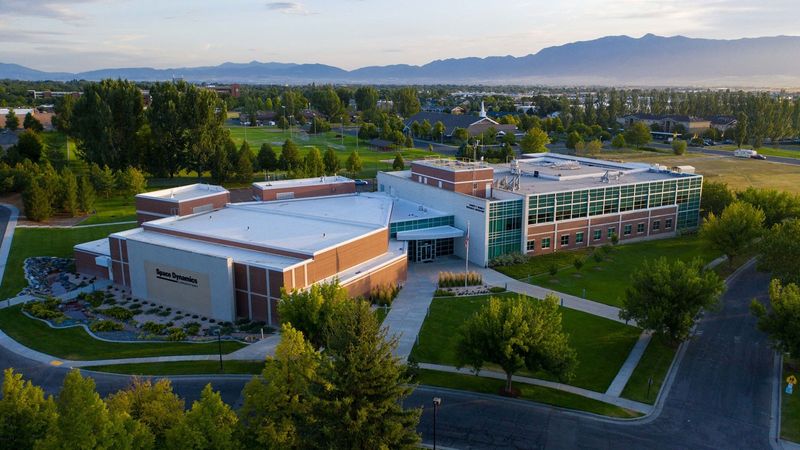
A small satellite built and operated by SDL to provide NASA with vital climate information completed its mission and performed more than 22 months beyond its mission requirement. (Credit: SDL/Kelden Peterson)
NORTH LOGAN, Utah, May 10, 2022 — A small satellite built and operated by Utah State University’s Space Dynamics Laboratory to provide NASA with vital climate information completed its mission and performed more than 22 months beyond its mission requirement. SDL built the HARP CubeSat to carry the Hyper-Angular Rainbow Polarimeter payload developed by the University of Maryland, Baltimore County, under the direction of Principal Investigator J. Vanderlei Martins.
Designed for a NASA mission lasting 90 days, the HARP CubeSat deployed from the International Space Station into low Earth orbit on Feb. 19, 2020. The spacecraft deorbited recently after two years of operations providing important information about the microphysical properties of cloud water and ice particles.
HARP represents the first attempt to fly a polarimeter on a CubeSat. CubeSats and other small satellites’ size limits the volume and mass of science payloads that can be deployed on them. Although the HARP spacecraft measures only 10 centimeters wide, 10 centimeters high, and 30 centimeters long — about the size of a loaf of bread — with a mass of 6 kilograms, there is substantial technology wrapped up in this small package. The HARP payload includes new technology to expand scientists’ ability to study clouds and aerosols. Measurements from HARP provide new information to help scientists better understand how aerosol particles affect weather, climate and air quality.
“The success of the HARP spacecraft demonstrates SDL’s commitment to NASA’s vision to ‘discover and expand knowledge for the benefit of humanity,’” said Asal Naseri, head of satellite technologies for SDL’s Civil and Commercial Space division. “SDL has been privileged to work under the visionary leadership of Dr. Martins and his team at UMBC to design, build and operate a small satellite that performed well beyond its intended lifespan.”
"The HARP CubeSat has provided a major benefit for the Earth Sciences community by demonstrating the accurate measurement of aerosol and cloud properties from space with a small hyper-angular polarimeter,” Martins said. “HARP has opened the path for future NASA missions to continue these measurements on a global scale. This work is a testament of how state university organizations like the Space Dynamics Laboratory and UMBC can contribute to the global monitoring of our planet."
In August 2020, HARP was named the Small Satellite Mission of the Year by the American Institute of Aeronautics and Astronautics, which presents the award to the mission that has demonstrated significant improvement in small satellite capability.
SDL has been solving the technical challenges faced by the military, science community and industry for over six decades and supports NASA’s mission to drive advances in science, technology, aeronautics and space exploration to enhance knowledge, education, innovation, economic vitality and stewardship of Earth. As one of 14 Department of Defense University Affiliated Research Centers, SDL serves as a subject matter expert in its core research areas to the U.S. Government, ensuring that essential engineering and technology capabilities are maintained. SDL is a research laboratory headquartered in North Logan, UT, and has offices in Albuquerque, NM; Colorado Springs, CO; Dayton, OH; Houston, TX; Huntsville, AL; Los Angeles, CA; Stafford, VA; and Washington, DC. For more information, visit www.sdl.usu.edu.
Contact
- SDL Public Relations
- 435-713-3054
- pr@sdl.usu.edu